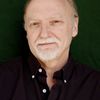The worst nuclear disaster to strike Japan since a single bomb fell over Nagasaki in 1945 occurred in the spring of 2011 at the Fukushima nuclear power plant following the epic tsunami. Today The New York Times reports (in a sadly submerged fashion, given the news from Libya) the disturbing news that a wide area around the Fukushima plant "could soon be declared uninhabitable, perhaps for decades, after a government survey found radioactive contamination that far exceeded safe levels."
The formal announcement, expected from the government in coming days, would be the first official recognition that the March accident could force the long-term depopulation of communities near the plant, an eventuality that scientists and some officials have been warning about for months.
Just two weeks ago, it was reported that radiation readings at the site had reached their highest points to date. The wide release of radiation, and fear of same, has forced the Japanese and others all over the world to reflect on what happened to the country in 1945, and the continuing (but usually submerged) threat of nuclear weapons and energy today.
In its main story marking the sixty-sixth anniversary of the atomic bombings, the New York Times highlighted the new activism of survivors of the bombing (the hibakusha) this year: campaigning against nuclear power, which has provided most of their country's energy needs. No one in the world can relate to the fears of a wide populace terrified that they (and perhaps the unborn) may be tainted forever by exposure to airborne radiation.
My colleague Robert Jay Lifton wrote an op-ed for the New York Times titled "Hiroshima and Fukushima." He pointed out:
One may ask how it is possible that Japan, after its experience with the atomic bombings, could allow itself to draw so heavily on the same nuclear technology for the manufacture of about a third of its energy. There was resistance, much of it from Hiroshima and Nagasaki survivors. But there was also a pattern of denial, cover-up and cozy bureaucratic collusion between industry and government, the last especially notorious in Japan but by no means limited to that country.
The Mainichi Shimbun sought out Sumiteru Taniguchi, now 82, and currently director of the Nagasaki A-Bomb Survivors Council, for comment. It noted that while he normally talks quietly and haltingly, "when the conversation turns to the ongoing crisis at the Fukushima No. 1 Nuclear Power Plant it is as if the floodgates open, and his tone suddenly turns harsh." Taniguchi said: "Nuclear power and mankind cannot coexist. We survivors of the atomic bomb have said this all along. And yet, the use of nuclear power was camouflaged as 'peaceful' and continued to progress. You never know when there's going to be a natural disaster. You can never say that there will never be a nuclear accident."
As it happens, I have interviewed Taniguchi three times, in the United States and in Japan. He is perhaps the iconic symbol of the hibakusha today, thanks to footage of him taken after the bombing, showing him, months after the attack, still on a floor, spread-eagled, his entire back an open wound, flaming red. It was part of footage shot by a U.S. film crew, and suppressed for decades, as I probe in my new book Atomic Cover-Up. (You can see some of the Taniguchi footage here.)
In April, 2011, five survivors' organizations including Taniguchi's Nagasaki group submitted a statement to the Japanese government declaring the collapse of the "safety myth" around nuclear power and demanding a change in the government's energy policy to prevent creating any more hibakusha. And Hidankyo, where Taniguchi still served on the board, "has sent a statement to the government," Mainichi Shimbun reported, "demanding that it distribute health record booklets -- similar to the ones that are distributed to atomic bomb victims and can be used as proof of radiation exposure -- to nuclear power plant workers and residents living close to them, and also provide periodic health examinations to those populations."
Taniguchi pointed out that numerous A-bomb survivors over the decades had sought help from the government after falling ill or suffering cancer and other diseases, allegedly from radiation exposure, but had been "abandoned." The Mainichi article closed with this question: Will the people who are suffering from invisible dangers in Fukushima be subjected to the same treatment?
Of course, the Fukushima disaster forced me to relive my own experiences in visiting the atomic cities, and my research into the American "cover-up" since. I was hardly alone. Writing in a New York Times op-ed after Fukushima, Nassrine Azimi, a senior adviser at a United Nations Institute, observed: "When it comes to nuclear issues -- from atomic weapons to nuclear power -- no two nations could be more irredeemably intertwined. After the atomic destruction of Hiroshima and Nagasaki, despite dissenting voices of some of its own citizens, America drew mostly wrong conclusions as it plunged into nuclear expansion."
She cited the book I wrote several years ago with Lifton, Hiroshima in America, for its painstaking acccount of "the relentless public relations campaign -- unleashed by the Truman administration almost within hours of the Hiroshima bombing -- that led to the Faustian bargain that blinded the Americans (and later the Japanese) to the insidious, long-term damage of radiation. Prominent journalists and media outlets of the time embraced, with enthusiasm, the 'Dawn of the Atomic Age' and America fell, in the authors' words, into the 'nuclear entrapment' that is with us to this day."Greg Mitchell's new book is "Atomic Cover-Up: Two U.S. Soldiers, Hiroshima & Nagasaki, and The Greatest Movie Never Made." Email: epic1934@aol.com.
